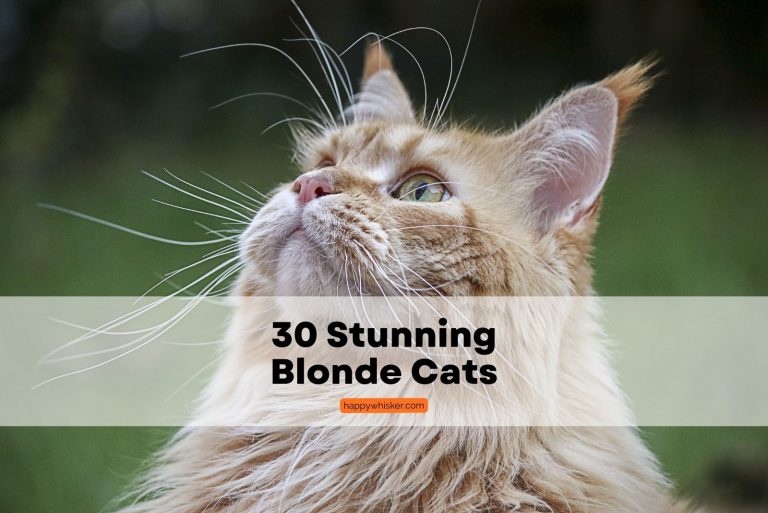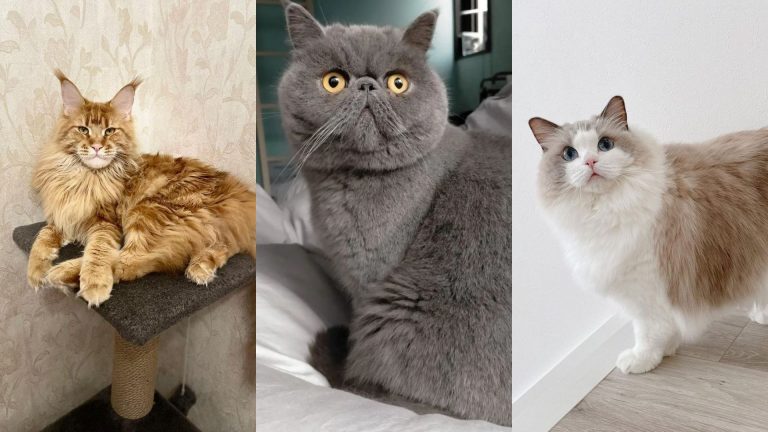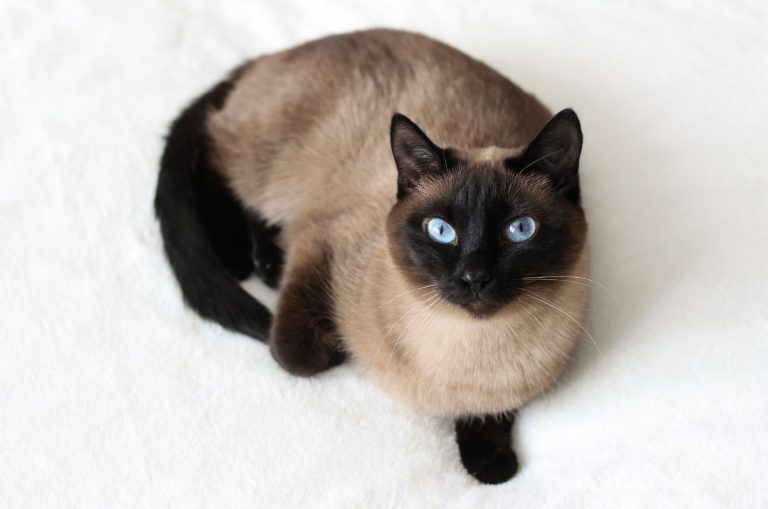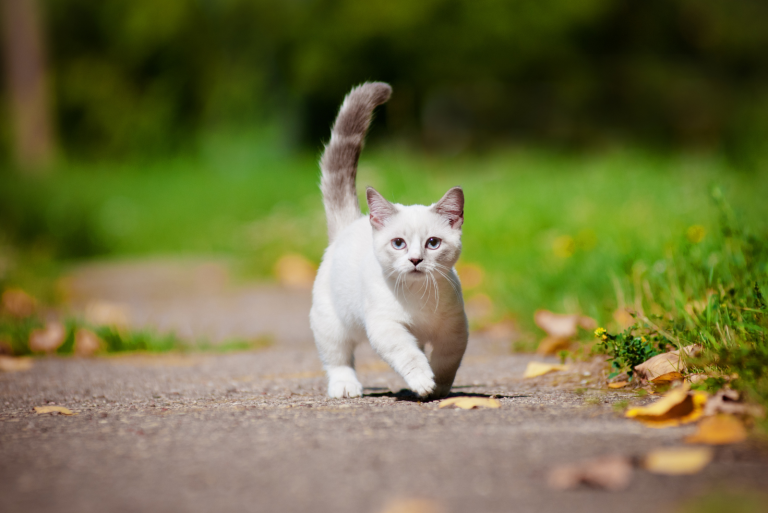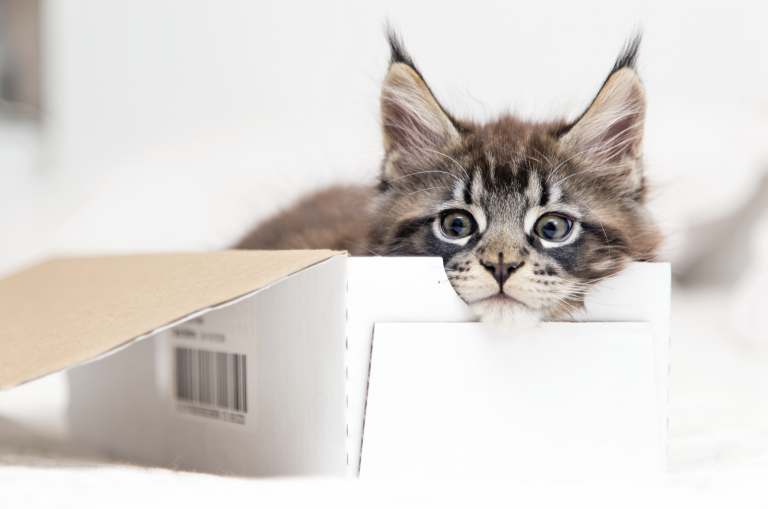List Of 13 Most Dangerous Cat Breeds
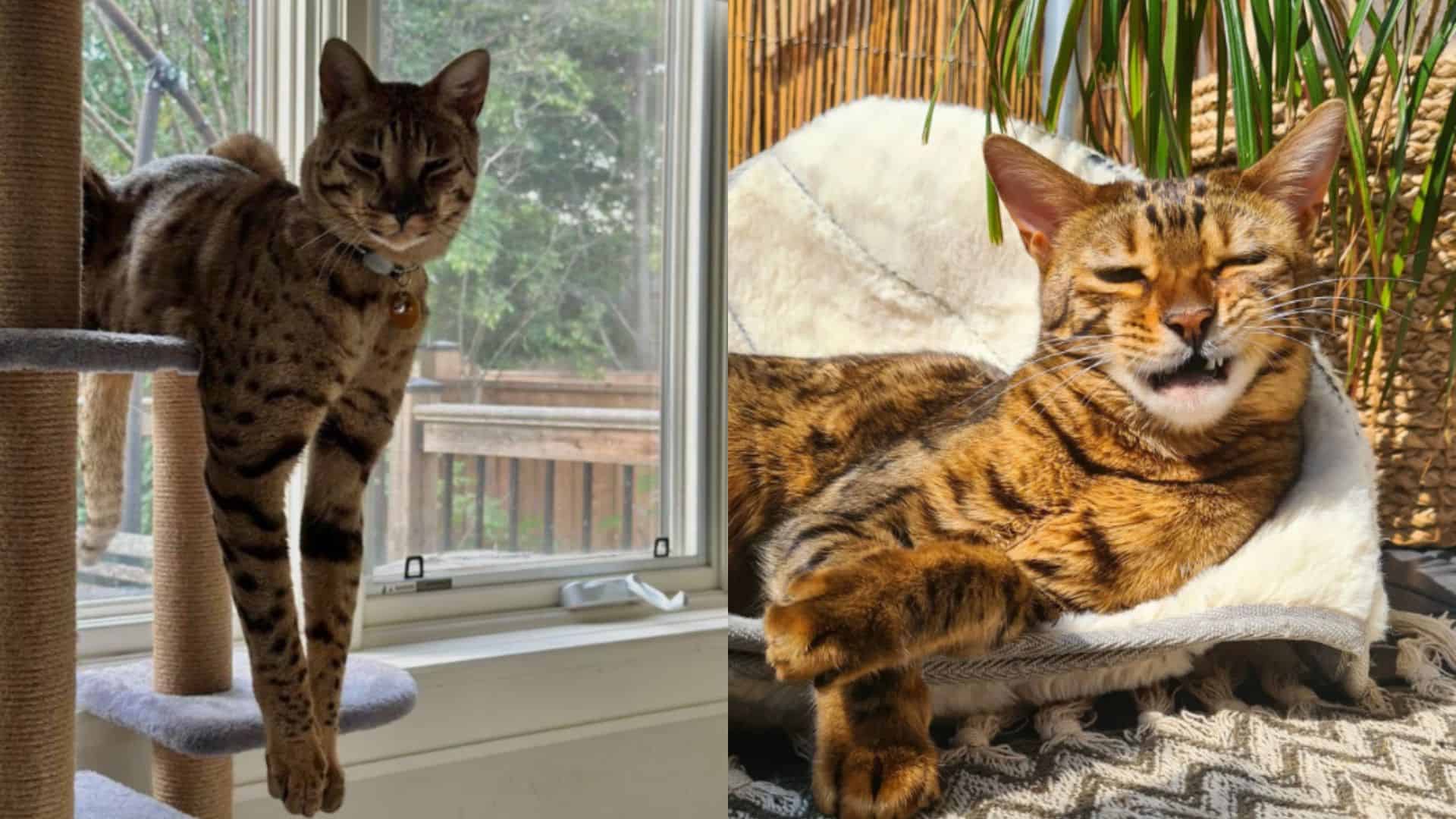
Every cat owner knows that their beloved feline friend possesses a wild side. This behavior is often seen as playful, considering their adorable and cuddly appearance, dismissing any notion of harm or danger.
However, even the most adorable and well-behaved house cat retains some wild traits from its ancestry. While most domesticated cats have distanced themselves from their wild origins, this is not always the case, particularly in certain breeds.
Before we look into this list of the 13 most dangerous cat breeds, it’s important to note that the behavior of domesticated cats can vary from one cat to another.
Some cats may exhibit dangerous behavior solely towards strangers, while others may act out when they are dissatisfied.
1. Savannah Cat
The Savannah cat is a crossbreed between a domestic cat and a wild cat, such as the Serval. These cats are typically energetic, loyal, and curious. Although not naturally aggressive or violent, they may become dangerous if they feel threatened.
Due to their wildcat DNA, their hunting instincts are often stronger than those of most domestic cats, which is also why they’re not really suitable for first-time cat owners.
Consequently, it can be risky to keep them around other household pets, such as fish or birds.
2. Siamese
Believe it or not, the Siamese cat is on the list!
While this may come as a shock to some cat lovers, it is indeed rare, but Siamese cats can display dangerous behavior.
Siamese cats are usually friendly and affectionate, particularly when raised in a loving environment. However, if their basic needs are not met, they can develop behavioral issues.
Additionally, Siamese cats are more territorial than other breeds and may bite their owners if they feel stressed or scared. With proper care and attention, these risks can be minimized.
3. Sphynx
The Sphynx cat breed is known for its almost hairless body and, to some, its “evil gaze.” I don’t know, I think they’re cute.
These kitties are generally affectionate, loving, and loyal as pets. However, they can be demanding if their needs are not fulfilled.
Sphynx cats thrive on being petted, require ample playtime, and crave cuddles. They are outgoing, curious, and highly energetic, necessitating both physical and mental stimulation.
4. Bengal
The Bengal cat breed was created by crossing domestic shorthair cats, often Egyptian Mau with Asian leopard cats.
Bengals are known for their loyalty, energy, and curiosity. However, their wild ancestry can manifest when they crave attention or become overly excited. They are also highly active and intelligent cats.
They enjoy swimming, climbing trees, and learning new tricks. Due to their strong hunting instincts, it is crucial not to leave them unsupervised with smaller pets like birds, fish, or hamsters.
Bengal cats are very loving, but if you pick them up or hug them and it’s a bad time, expect their claws to come out! They need to be trained and socialized on time, and here are 8 steps on how to do it properly.
Bengal cats are prohibited in several states across the USA, including Connecticut, Seattle, New York, and Hawaii.
5. Chausie
Love this cat #chausie pic.twitter.com/lqVTRjbFZn
— coshgirl (@coshgirl) August 12, 2020
The Chausie is a relatively new cat breed. These cats were developed by crossing a jungle cat with different domestic cat breeds.
They’re also known for their kitten-like behavior even in adulthood and are very loyal to their owners.
They are large, athletic cats with long, slender bodies, deep chests, and large ears. Known for their high energy levels, Chausies love to play and are quite active.
However, they may not be suitable for households with small children due to their risky play behavior.
6. Somali
The Somali is a semi-long-haired cat known for loving its owner’s hair, beard, or mustache. While generally not harmful, having their claws near your face can be uncomfortable.
Somali cats dislike being alone for extended periods and prefer to be in the company of people or other cats. If their need for attention is not met, they may exhibit attention-seeking behavior, aggression, or mischievous actions.
7. Donskoy
Although resembling Sphynx cats, Donskoy cats are genetically distinct but share the gene for hairlessness. Their appearance may seem less flattering due to their baldness, giving them a scarier look than their actual nature.
Donskoy cats are more prone to being dangerous to other cats rather than to humans. They can be selective with their interactions, displaying sudden and violent attacks, including growling, hissing, biting, and clawing toward other cats.
8. Egyptian Mau
Egyptian Mau is a unique breed of short-haired cats and one of the few naturally spotted domesticated cat breeds. They have muscular bodies and are highly active, requiring ample daily entertainment.
They are usually lovely and affectionate, but only if they’re socialized on time.
If not exposed to other cats and dogs during their kittenhood, they may develop aggression. Egyptian Mau cats tend to form strong bonds with one individual, while being generally friendly towards all family members.
9. Pixie-Bob
Pixie-Bob cats are sometimes mistakenly thought to be highly dangerous due to their appearance resembling Bobcats. However, their DNA indicates the absence of any wild cat genes.
These large cats enjoy cuddling and playing with their owners. They have strong personalities and are not afraid to vocalize their thoughts, often chirping, chattering, and growling. Pixie-Bob cats are excellent house cats who get along well with other pets, strangers, and basically anyone. So, they’re not exactly dangerous, but more dangerously looking.
10. Bombay
Bombay cats have short hair, a stocky build, and an energetic appearance. Their glossy coats and resemblance to wild panthers make them a favorite among cat lovers.
Many cat lovers love the idea of owning a Bombay cat since it’s like having a mini panther running around the house.
While they are considered dangerous and deadly due to their wild-like appearance, Bombay cats are typically fun, playful, and friendly.
However, they can become destructive if bored. Keeping them entertained with toys and playtime will ensure they remain sweet and well-behaved.
11. Lykoi
Lykoi cats are visually unique, resembling werewolves with their wedge-shaped heads, piercing gold eyes, huge ears, and somewhat silver coats. While their appearance may be terrifying to some, their personality is quite pleasant.
They are usually lovely, calm, and playful, though they may be shy around strangers. With their families, they are affectionate lap cats.
12. American Wirehair
The American Wirehair is a robust cat with a muscular body. While they enjoy their owner’s attention, they also appreciate their alone time.
They do not prefer being carried or held and will choose to stay beside you rather than climb onto your lap for cuddles.
These cats are independent and can thrive in a home where they have their own little sanctuary for hiding and relaxing alone.
13. Ocicat
The name Ocicat comes from the wild Ocelot cats, but there is no DNA connection despite their resemblance. They were bred from American Shorthair, Abyssinian, and Siamese cats.
Despite their wild appearance, Ocicats are typically sociable, energetic, and curious. Similar to the situation with Pixie-Bob cats, they may only appear dangerous due to their association with wild cats, but they are not inherently dangerous.
They require daily activities, and when their needs are met, they are friendly and non-aggressive toward people and other pets
And what about coat patterns and colors?

Well, here’s an interesting fact for you!
According to several studies, such as one conducted by vets at UC Davis, cats with tortoiseshell coat coloring are more likely to exhibit dangerous, demanding, and aggressive behavior. In addition, tortie kittens are also prone to hissing, pawing, scratching, and biting when touched.
That concludes our discussion on dangerous cat breeds. As you can see, some may only appear dangerous, while others can pose genuine harm to humans and other pets.
However, always remember that every cat has its own personality and quirks, and each cat is unique. If your cat is on this list, it doesn’t automatically mean they are dangerous. Your cat can be adorable, cuddly, and non-aggressive.
I hope you’ve learned something new today and remember that with proper care and socialization, our feline friends can avoid aggression and destructive behaviors.


